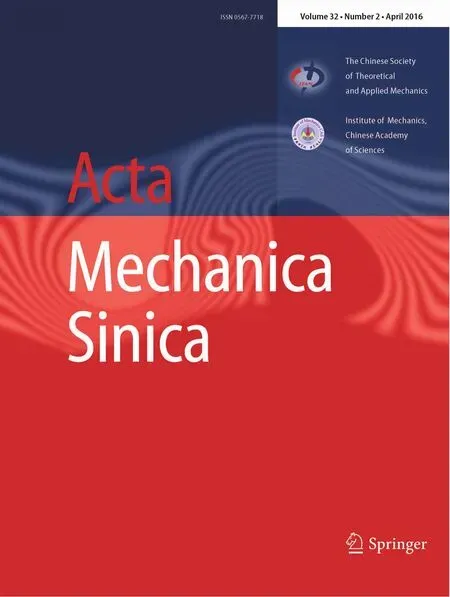Dynamic simulation and safety evaluation of high-speed trains meeting in open air
2016-09-06SongyanLiZhijunZhengJilinYuChunqiangQian
Songyan Li·Zhijun Zheng·Jilin Yu·Chunqiang Qian
Dynamic simulation and safety evaluation of high-speed trains meeting in open air
Songyan Li1·Zhijun Zheng1·Jilin Yu1·Chunqiang Qian1
©The Chinese Society of Theoretical and Applied Mechanics;Institute of Mechanics,Chinese Academy of Sciences and Springer-Verlag Berlin Heidelberg 2015
AbstractDynamic responses of a carriage under excitation with the German high-speed low-interference track spectrum together with the air pressure pulse generated as high-speed trains passing each other are investigated with a multi-body dynamics method.The variations of degrees of freedom(DOFs:horizontal movement,roll angle,and yaw angle),thelateralwheel-railforce,thederailmentcoefficient and the rate of wheel load reduction with time when two carriages meet in open air are obtained and compared with the results of a single train travelling at specifie speeds.Results show that the rate of wheel load reduction increases with the increase of train speed and meets some safety standard at a certain speed,but exceeding the value of the rate of wheel load reduction does not necessarily mean derailment. The evaluation standard of the rate of wheel load reduction is somewhat conservative and may be loosened.The pressure pulse has significan effects on the train DOFs,and the evaluations of these safety indexes are strongly suggested in practice.Thepressurepulsehasalimitedeffectonthederailment coefficien and the lateral wheel-rail force,and,thus, their further evaluations may be not necessary.
KeywordsHigh-speedtrain·Pressurepulse·Derailment· Dynamics simulation·Safety standard
1 Introduction
Aerodynamics problems and structural safety involved in modern high-speed trains have gained much attention[1]. When two trains pass each other,an air pressure pulse generates and sweeps through car bodies,which is a type of transientload.Atypicalfeatureofapressurepulseisthatthe value of pressure fluctuatio alternates positively and negatively[2],which is caused by the fore-/after-body of one train passing the other train.The spatial interval between the positive-and the negative-peak pressure values is constant and the peak value of the air pressure pulse is proportional to the square of the relative speed of trains[3].For example, Xiong and Liang[4]measured the pressure pulse generated in the meeting of China Railways CRH2 Electric Multiple Unit(EMU)trains and presented a fittinfunction of the pressure amplitude versus meeting speeds.In addition, Tian and He[5]simulated the three-dimensional flw fiel with a flui dynamics method to obtain the pressure pulse. Furthermore,Cui and Zhang[6]employed flui dynamics and train multibody system dynamics methods,analyzed the dynamicsresponseofatraintravelingunderacrosswind,and evaluated the safety indexes under a crosswind environment. Also,Lai et al.[7]indicated that strong transient loads generated by high-speed trains meeting have significan effects on horizontal movement,roll angle,and yaw angle of trains. When subjected to a pressure pulse,a train is more likely to have snaking motion,overturn,and derail.Lateral wheelrail force[8],derailment coefficien[9],and rate of wheel load reduction[10]are key indexes to evaluate the safety of running vehicle.A track irregularity has a significan effect on the running safety of trains.An investigation by Choi et al.[11]showed the irregularities of cross level,vertical profile and gauge to understand their influenc on the safetyindexes of trains.Wheel-rail unsymmetrical contact caused bywheelprofil wearofhigh-speedtrainsmayleadtolateral instability and a large derailment coefficien[12].In another study,Bocciolone et al.[13]studied the crosswind action on rail vehicles.Meanwhile,Li et al.[14]investigated the characteristics of a pressure wave induced by high-speed trainsmeetinginopenair.AnewmethodfornumericalsimulationwasfoundbyZhaoandSun[15]fortwotrainspassing each other at the same speed.In another study,Liu et al.[16]studied the influenc factors and developed a regularity for an air pressure pulse as trains pass by each other.Also,Qian et al.[17]simulated a dynamic response for side windows of high-speed trains subjected to crossing air pressure pulse.
Amulti-bodydynamicsmethodisemployedhereintoanalyzethedynamicresponseofamiddlecarofChinaRailways CRH3EMU,whosegeometricandkineticparametersarethe same as the actual vehicle.The air pressure measured from high-speed trains on the Zhengzhou-Xi’an railway passenger dedicated line by China Academy of Railway Sciences is adopted,and excitation with the German high-speed lowinterference track spectrum is applied to the running train model.The vibrations of degrees of freedom(DOFs:horizontal movement,roll angle,and yaw angle),the lateral wheel-rail force,the derailment coefficient and the rate of wheel load reduction of two trains meeting in open air are comparedwiththeresultsofasingletraintravelingatcertain speeds.The influence of air pressure applying to traveling trains on all safety indexes are obtained.
2 Numerical model
2.1Multi-body dynamics model
A China Railways CRH3 EMU has eight carriages.The firs and the last carriages are cabs,and the other carriages are passenger areas.One of the passenger carriages is simplifie andshowninFig.1.Itsdynamicresponsesarecarriedoutby using a multi-body dynamics simulation method in the commercial software SIMPACK.A simplifie model of bogies is shown in Fig.2.The model is established as follows:
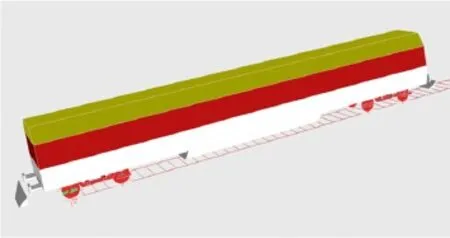
Fig.1 Model of a car body
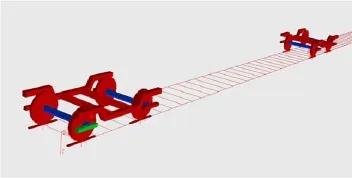
Fig.2 Models of bogies
(1)The models including one car body,two bogies,four wheelsets,and eight rotating arms are assumed to be rigid.Each rotating arm has one DOF,and any of the other free rigid bodies has three translational DOFs and three rotational DOFs.Thus,there are in total 42 independent DOFs and eight constrained DOFs.
(2)The total mass and the rotational inertias of a carriage, and the parameters of bogies are consistent with those of an actual carriage.
(3)Some tiny structures,such as door handles and power boxes,are not included in the car body model.
(4)The air pressure generated by the firs cab is considered, and the peak value of the air pressure is taken to be constant in the vertical direction of a carriage.
2.2Nonlinear details
The nonlinear parts of the model mainly include the wheel railcontactnonlineargeometryrelationship,wheelrailcreep, free transverse momentum of the wheel set,and nonlinear suspension system.In this study,the wheel tread of the train is S1002GH and the rail outline is Rail_60H [18].The wheel-rail relationship is shown in Fig.3.The nonlinear factors of the suspension system mainly include the vertical dampers of primary suspension and secondary suspension,thelateraldamperofsecondarysuspension,antisnake movement damper,and the lateral stoppingblock.The force-displacementcurveofalateralstoppingblockisshown in Fig.4.
2.3Simplificatio and loading of pressure pulse
Consideratypicalpressurepulsegeneratedbytrainspassing each other in open air applyied to a passenger carriage.Two trainstravelatthesamespeed,denotedas V.Whentheypass each other,the pressure pulse relative to a train moves with speedv,whichistwicethemeetingspeedoftrains,writtenasAnexampleofthepressurepulsemeasuredisgiveninFig.5. The waveform of the central compartment point was measured,when the CRHA380 trains passed each other in open air in the line of Zhengzhou-Xi’an in September,2010. When the heads of the trains meet each other,the amplitude of the pressure wave generated is much higher than that when the tails of the trains meet each other.Here,only the waveform of the pressure pulse when the heads of the trains meet each other is taken into consideration.The simplifie waveform when two trains pass each other at the same speed of V=350 km/h is shown in Fig.6,and the wavelength of the pressure pulse does not vary with the change of the meeting speed.
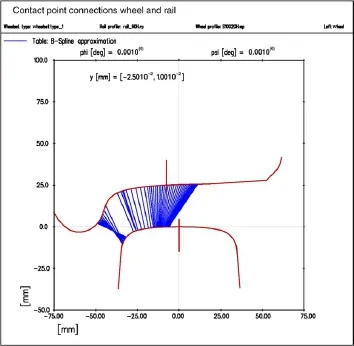
Fig.3 Spatial wheel/rail contact geometry relationship

Fig.4 The force-displacement curve of a lateral stop

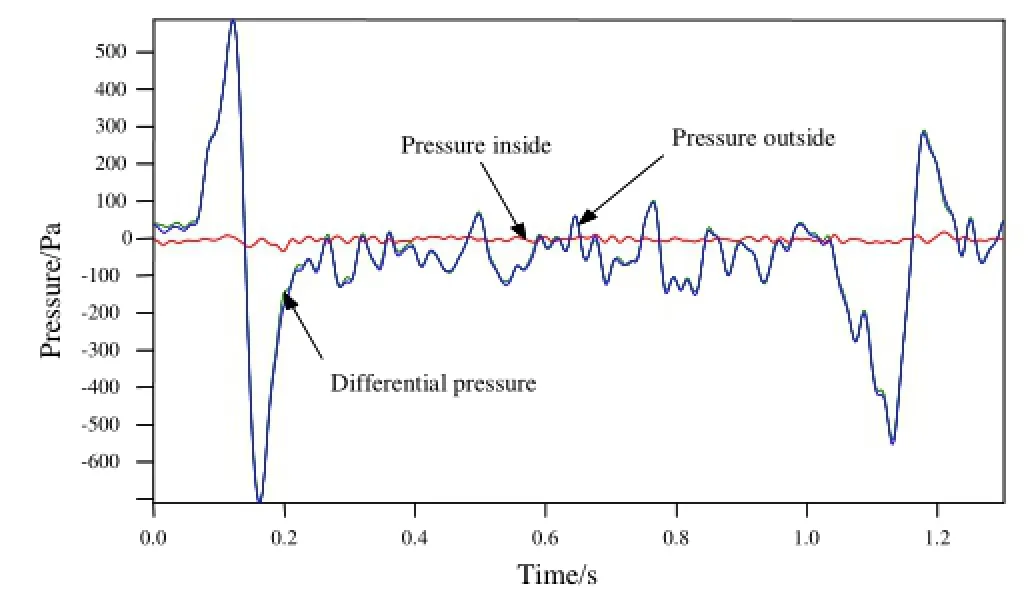
Fig.5 The pressure pulse was measured from the middle point of the passenger carriage by China Academy of Railway Sciences when two CRHA380trainspassedeachotherinopenairontheZhengzhou-Xi’an railway at 350 km/h in September,2010

Fig.6 Simplifie pressure pulse of CRH3 when two trains pass each other at 350 km/h
Applyingthepressurepulsesweepingthroughthecarriage to the centroid of the train(the pressure pulse in the vertical direction is uniformly distributed)and using the interaction method,we get the force perpendicular to the side of the carriage Fy,the shaking moment Mz,and the overturning moment Mx.The expressions are given by

where L is the length of a single carriage,h the effective height of train,D the height difference between the geometric center and the centroid of carriage,P(x)the spatialdistributionfunctionofthepressurepulse,andxcthelocation of the centroid of carriage.The force and moments applying to the carriage when two trains pass each other in open air at 350 km/h are shown in Fig.7.According to the rule that the amplitude of the pressure pulse is in proportion to the square of the meeting speed,we have
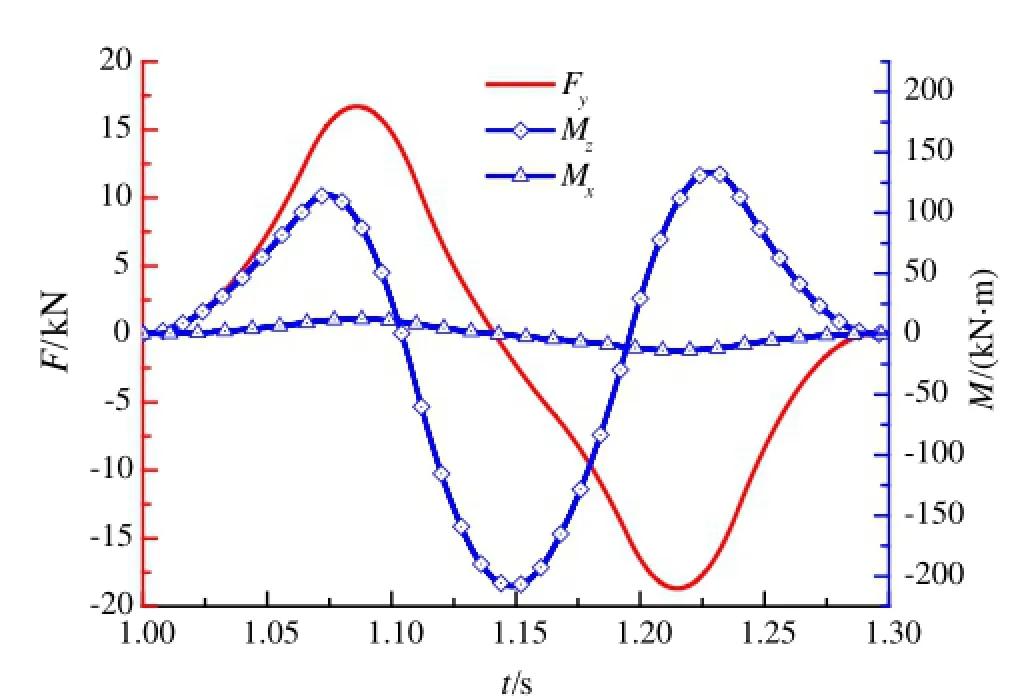
Fig.7 The force and moments of CRH3 when two trains pass each other at 350 km/h

where p is the absolute value of the difference between the positive and the negative amplitude of the pressure pulse, whose unit is kPa,and V the meeting speed of trains,whose unit is km/h.Furthermore,we can get the force,Fy,and the two moments,Mzand Mx,at different meeting speeds.
2.4Working conditions
The rails of railway are not in the ideal straight and fla situation.They have several types of irregularity,including alignmentirregularity,crosslevelirregularity,verticalprofil irregularity,and gauge irregularity.These geometric irregularities make the wheel have much interaction with the rail, cause rail surface abrasion and track geometry changes,and make the rail have random and imbalanced conditions[11]. The faster a train travels,the larger frequency range of the track irregularity effects.This increases the disturbance and decreases the stability of traveling.The international standard of the German high-speed low-disturbance spectrum [11]is applied in the present simulation.For the comparability of results,the track spectrum is used at different traveling speeds of trains and different track irregularities.
Theworkingconditionsforthemulti-bodydynamicssimulation in this study are:
(1)Transient pressure pulses are generated under the condition of trains meeting at constant speeds of 250,300, 350,400,450,and 500 km/h.
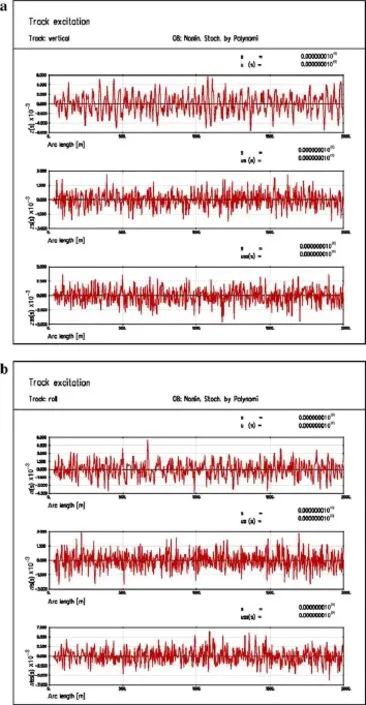
Fig.8 Irregularities of the German high-speed low-disturbance spectrum.a Vertical profil irregularity and alignment irregularity.b Cross level irregularity(The data are from the commercial software SIMPACK.)
(2)The track excitation is the German high-speed lowdisturbance spectrum[19],including vertical profile cross level and alignment irregularities,see Fig.8.
3 Results and discussion
3.1Dynamic response of train DOFs
When a high-speed train moves on irregular tracks,it has small vibration responses.The maximum amplitude that the

Fig.9 Comparisonofvibrationsbetweentwotrainspassingeachother and a single train traveling at 400 km/h.a Horizontal movement.b Roll angle.c Yaw angle
vibration responses can reach is an important condition for measuring the operation’s stability.When two trains pass each other,the swings of the trains may be much evident. The variations of horizontal movement,roll angle,and yaw angle when two trains pass each other in open air at 400 km/h,and when a train travels alone are shown in Fig.9. Vibrations in all directions are significantl increased with the increase of time.The maximum values of vibrations are given in Table 1.It is found that the pressure wave when two trains pass each other in open air has significan effects on the vibrations of train DOFs.The horizontal movement and the yaw angle of the meeting trains vary more strongly than those of a single traveling train.The severe vibrations may increase the likelihood of capsizing and serpentine locomotion of trains,and decrease the train operation stability and the passenger comfort.

Table 1 The maximums of vibration when two trains pass each other and when a single train travels at 400 km/h
3.2Lateral wheel-rail force
The lateral wheel-rail force is the transverse component of theforcebetween trackand wheel,whosemaximum value is used to judge whether the train will lead to gauge widening or produce some severe deformation on the line.The firs and the second limit values of the lateral wheel-rail force are given by[8]

where H is the maximum of the lateral wheel-rail force with theunitofkN,and Pst1and Pst2thestaticloadsoftheleft-and right-side wheels,respectively,with the unit of kN.In general,the lateral wheel-rail force requires meeting a tougher second limit.In the other words,it has certain standards for a safety margin.According to the railway vehiclesspecificatio for evaluation,the dynamic performance,and accreditation test[8],the weight of the locomotive axle load studiedinthisstudyis116.35kN,andthesecondstandardin Eq.(4)gives H≤41.47 kN.The lateral wheel-rail forces of the four wheelsets versus train speeds are shown in Fig.10. It shows that the lateral wheel-rail force of each wheelset is increased with the increase of the meeting speed.When the meeting speed is under 500 km/h,all the lateral wheel-rail forces are less than the critical value 41.47 kN.The lateral wheel-railforceisaffectedbyboththerailrandomexcitation and the air pressure pulse.The lateral wheel-rail force at 250 km/h could be slightly greater than that at 300 km/h in some wheelsets.
3.3Derailment coefficien
Derailment means that the geometric relationship between wheel and rail is broken.This possibility of derailment is measured by the derailment coefficient which is define as the ratio of wheel lateral(Qw)to vertical(Pw)forces
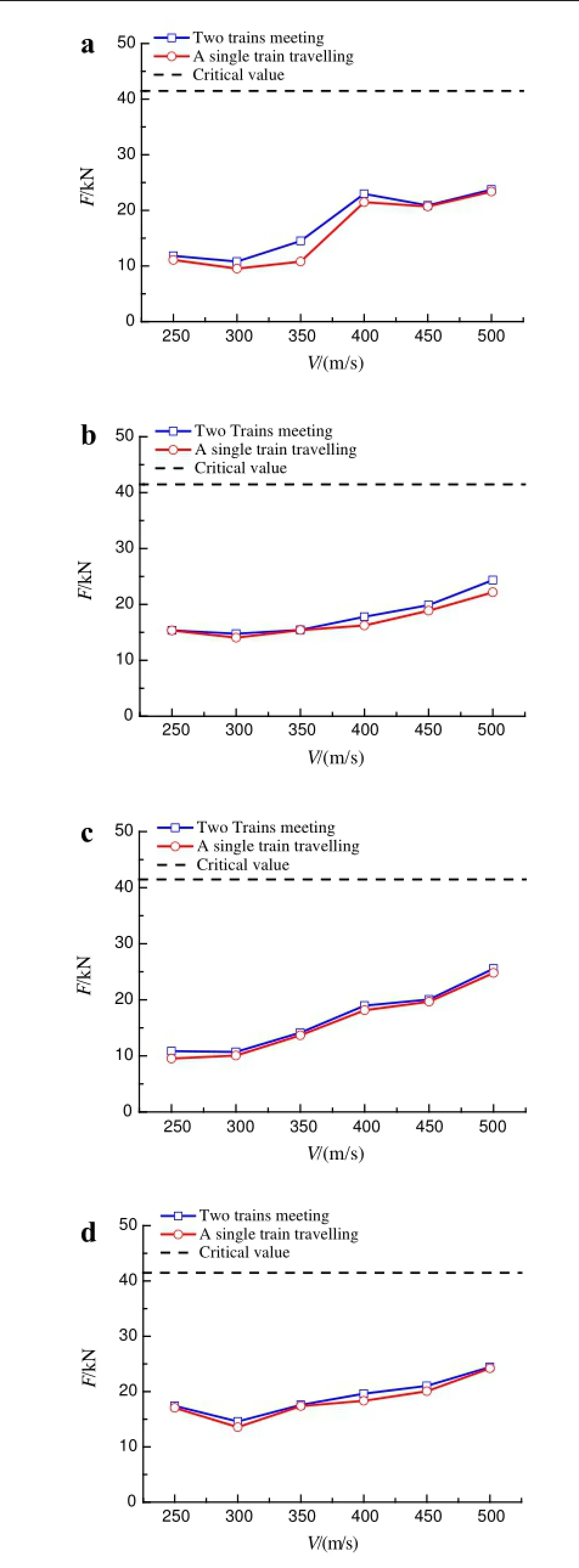
Fig.10 The lateral wheel-rail force versus train speed.a Wheelset 1. b Wheelset 2.c Wheelset 3.d Wheelset 4

Table 2 Evaluation criteria for the derailment coefficien[8]
at the flange-railheacontact surface.The Chinese derailment coefficien standard is shown in Table 2.According to the code for design of a high-speed railway(for trial implementation)promulgated in 2009,the value of the derailment coefficien is Qw/Pw≤0.8.
The vehicle model used in this study has four axles. Each axle has two wheels,and there are eight wheels in total.The calculation of the derailment coefficien is for two working conditions:a single train travels on tracks and two trains pass each other on tracks.The train speeds for the two working conditions are 250,300,350,400,450, and 500 km/h.The derailment coefficientfor the eight wheels at 400 km/h are shown in Table 3.The derailment coefficien of each wheel when the trains pass each other is slightly larger than that of a single traveling train. The derailment coefficien of the fourth right wheel is larger than that of others.The derailment coefficient of the fourth right wheel at different traveling speeds are shown in Fig.11.At a low traveling speed(<400 km/h),the pressure pulse does not have obvious effects on the derailment coefficient At a high traveling speed(>400 km/h),the pressure pulse makes the derailment coefficien obviously increase.For example,at 500 km/h,the derailment coeffi cient increases from 0.248 to 0.289,16.54%higher.It is found that all the derailment coefficient are far lower than 0.6 and,thus,the levels of evaluation are all in the excellent range.
3.4Rate of wheel load reduction
The rate of wheel load reduction is another important index to evaluate the safety of a running train.It is define as the ratio of the load reduction of the wheel vertical force−ΔPw to the average of the left and the right wheel vertical forces Pw,i.e.,−ΔPw/Pw.Therateofwheelloadreductionplaysa supporting and complementary role to the derailment coeffi cient.ThewheelloadreductionevaluationstandardsofChina are shown in Table 4.The wheel load reductions at 400 km/h are presented in Table 5.The rates of wheel load reduction for the four wheelsets when traveling at different speeds are showninFig.12.Farbelow400km/h,theratesofwheelload reductionwhenatraintravelsaloneortwotrainspassingeach other in open air are less than 0.65,which is the first-l vel standard of China;above 400 km/h,the values exceed 0.65 and are close to 1 at 500 km/h.

Table 3 Derailment coefficient of two trains passing each other and a single train traveling at 400 km/h
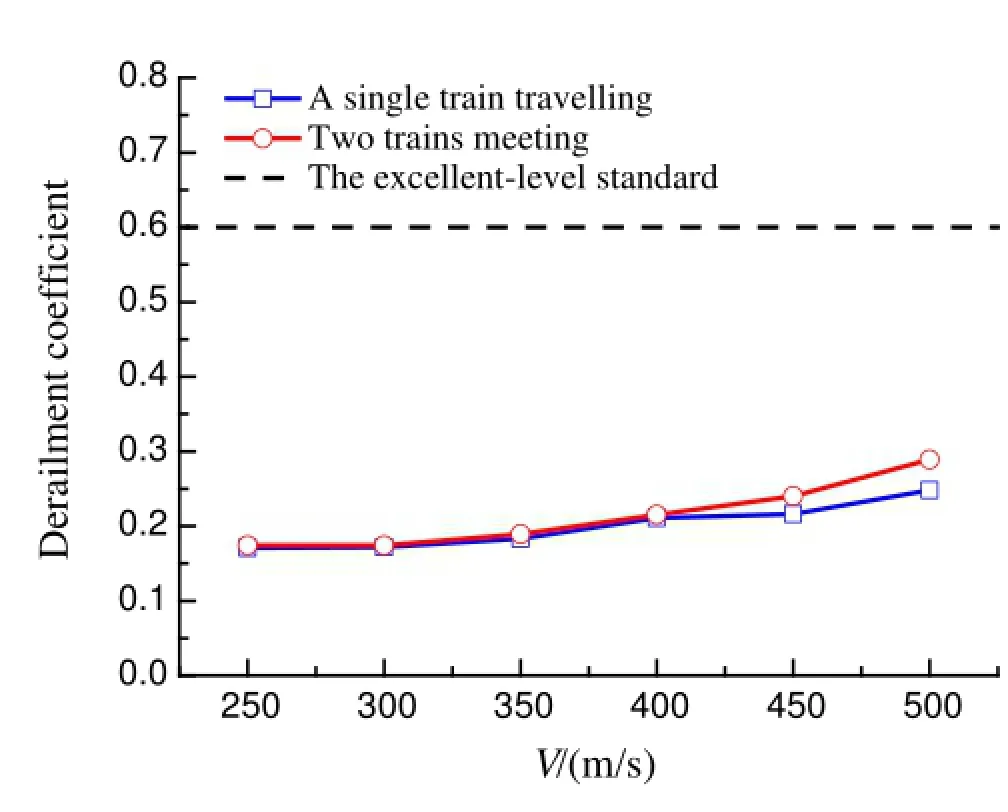
Fig.11 The derailment coefficien of wheelset 4 right versus train speed

Table 4 Evaluation criteria for the rate of wheel load reduction[9]

Table 5 The rate of wheel load reduction of two trains passing each other and a single train traveling at 400 km/h
There is a special explanation needed for the contradiction that the rate of wheel load reduction and the derailment coefficien sometimes does appear in the EMU test.Sometimes the derailment coefficien is not too large,but the rate of wheel load reduction could exceed the standard.In the EMU speed test of the“Pioneer”and“China Star”,even if the rate of wheel load reduction standard is relaxed to 0.8, there are some situations where the standard is exceeded. Some European scholars[3]think that the dynamic rate of wheelloadreductionisnotnecessary.SomeNorthAmerican scholars[9]relax the standard to 0.9.The rate of wheel load reduction in the dynamic conditions have a relationship with both magnitude and direction of lateral wheel-rail force.If the lateral wheel-rail force is not conducive to derailment, the derailment coefficien will not be too large and a train will not derail.Japanese scholars[9]even allow the rate of wheel load reduction larger than 1.0,but the duration can not exceed 0.015 s.Therefore,the derailment coefficien is a main standard while the rate of wheel load reduction is an auxiliary standard.If the derailment coefficien and the rate of wheel load reduction both exceed the maximum values allowed,the rate of wheel load reduction is the main factor causing the derailment.If the derailment coefficien is not large but the rate of wheel load reduction is exceeded,we should analyze and examine the cause.
From the comparison in Fig.11,the rate of wheel load reduction when trains pass each other in open air is larger than that when a single train is traveling.Especially at a high speed(>400 km/h),the increase of the rate of wheel load reduction is much more obvious,for which one should be pay much attention.
4 Conclusions
A carriage model under excitation with the German highspeed low-interference track spectrum and action with a pressure pulse is proposed with a multi-body dynamics simulation method in the commercial software SIMPACK.The carriage model is applied with the pressure pulse generated by trains passing each other at different speeds to simulate various conditions.It is focused on understanding the effects of the pressure pulse on the safety of trains meeting in open air.The investigations of the vibrations of DOFs(horizontal movement,roll angle,and yaw angle),the lateral wheel-rail force,the derailment coefficient and the rate of wheel load reduction are carried out.
(1)When the train speed is not less than 400 km/h,all safety indexes calculated meet the requirements for the two cases of a single train traveling and two trains meeting in open air.When the train speed is higher than 450 km/h, therateofwheel loadreductionexceeds 0.65.According to the safety standard for the rate of wheel load reduction in Europe and United States,the derailment coefficien playsthemostimportantroleinderailment,whiletherate of wheel load reduction is a complementary role to the derailment,so exceeding the value of the rate of wheel load reduction does not necessarily mean derailment.It is suggested that the evaluation standard in China is too conservative,which may be loosened to 1 with limiting the exceeding duration.
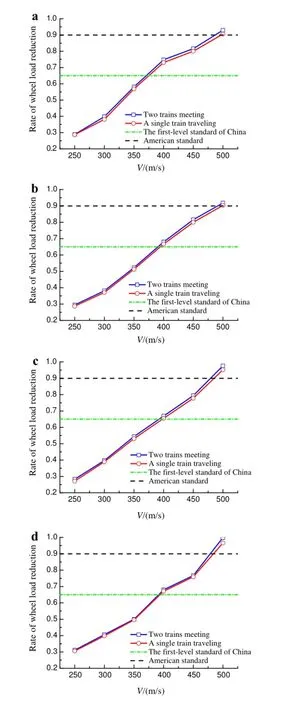
Fig.12 Therateofwheelloadreductionversustrainspeed.aWheelset 1 b Wheelset 2 c Wheelset 3 d Wheelset 4
(2)The variations of train DOFs(horizontal movement,roll angle,and yaw angle),the lateral wheel-rail force,the derailment coefficient and the rate of wheel load reduction with time when trains pass each other in open air are larger than those when a single train is traveling,which means that,the pressure generated by trains meeting,significantlaffects the dynamic response of high-speed trains.The horizontal movement and the yaw angle apparently change much.Thus,these two indexes shouldbeevaluatedinpractice.Theevaluationoftheroll angle is also necessary.
(3)The results show that the pressure pulse has a limited effectonthederailmentcoefficien andthelateralwheelrailforce.Eveniftwotrainspasseachotherinopenairat ahighspeedabove400km/h,thevaluesofthederailment coefficient andthelateralwheel-railforcesaremuchless than the safety standard values.The further evaluations of the derailment coefficien and the lateral wheel-rail force may be not necessary in practice.
AcknowledgmentsThe financia supports from the National Basic Research Program of China(973 program,Grant 2011CB711100),the National Natural Science Foundation of China(Project No.11372307)and the Chinese Academy of Sciences(Grant KJCX2-EW-L03)are acknowledged.
References
1.Baker,C.:The flw around high speed trains.J.Wind Eng.Ind. Aerodyn.98,277-298(2010)
2.Komatsu,N.,Yamada,F.:The Reduction of the Train Draft Pressure in Passing by Each Other.Proceedings of World Congrence Railway Research,Tokyo(1999)
3.Raghunathan,R.S.,Kim,H.D.,Setoguchi,T.:Aerodynamics of high-speed railway train.Prog.Aerosp.Sci.38,469-514(2002)
4.Xiong,X.H.,Liang,X.F.:Analysisofairpressurepulsesinmeeting ofCRH2EMUtrains.TiedaoXuebao/J.ChinaRailw.Soc.31,15-20(2009).(in Chinese)
5.Tian,H.Q.,He,D.X.:3-DNumericalcalculationoftheairpressure pulse from two trains passing by each other.Tiedao Xuebao/J. China Railw.Soc.23,18-22(2001).(in Chinese)
6.Cui,T.,Zhang,W.H.:A new studying method for safety of a train with attitude changing in side wind.Zhendong yu Chongji/J.Vib. Shock 30,143-146(2011).(in Chinese)
7.Lai,J.,Zeng,X.H.,Sun,Z.X.,et al.:The dynamic responses of high-speed trains passing tunnel,passing by each other on open trackandinsidetunnel.Proc.Twenty-FirstNatl.Conf.Struct.Eng. II,222-225(2012)
8.GB/T 5599-1985.Railway vehicles-Specificatiofor evaluation the dynamic performance and accreditation test.(1985)
9.Zeng,Y.Q.,Wang,W.D.,Shu,X.G.,et al.:Dynamic limits for derailment safety evaluation.J.China Acad.Railw.Sci.20,70-77 (1999)
10.Zhang,H.,Yang,G.Z.:Derailment and wheel unloading of passenger car bogies.J.Rolling Stock 43,10-16(2005).(in Chinese)
11.Choi,I.Y.,Um,J.H.,Lee,J.S.,et al.:The influenc of track irregularities on the running behavior of high-speed trains.Proc.Inst. Mech.Eng.Part F J.Rail Rapid Transit 227,94-102(2013)
12.Liu,W.,Ma,S.H.,Luo,S.H.,et al.:Wheel/Rail unsymmetrical contact of a high-speed train due to wheel wear.Zhendong yu Chongji/J.Vib.Shock 32,107-107(2013).(in Chinese)
13.Bocciolone,M.,Cheli,F.,Corradi,R.,et al.:Crosswind action on rail vehicles:wind tunnel experimental analyses.J.Wind Eng.Ind. Aerodyn.96,584-610(2008)
14.Li,X.J.,Liu,C.H.,Yang,G.W.:Characteristics of pressure wave induced by high speed trains meeting in open air.J.Sci.Technol. Eng.12,3689-3694(2012).(in Chinese)
15.Zhao,X.,Sun,Z.:A new method for numerical simulation of two trains passing by each other at the same speed.J.Hydrodyn.22, 697-702(2010)
16.Liu,J.,Li,R.X.,Qi,Z.D.:The influencfactors and developing regularity of air pressure pulse as trains passing through each other.Third International Conference on Transportation Engineering(ICTE),2707-2713.Chengdu,China 2011
17.Qian,C.Q.,Zheng,Z.J.,Yu,J.L.,et al.:Dynamics response of side windows of high-speed trains subjected to crossing air pressure pulse.J.Mech.Eng.49,30-36(2013).(in Chinese)
18.Railway Industrial Standard TB/T 449-2003:Profile of wheel flang tread for locomotives and cars.Ministry of railway of the People’s Republic of China(2003).(in Chinese)
19.Zhao,Y.,Zhang,Y.H.,Lin,J.H.:Summaryonthepseudo-excitation method for vehicle random vibration PSD analysis.Appl.Math. Mech.34,107-117(2013).(in Chinese)
24 September 2014/Revised:28 December 2014/Accepted:3 May 2015/Published online:15 August 2015
✉Zhijun Zheng
zjzheng@ustc.edu.cn
1CAS Key Laboratory of Mechanical Behavior and Design of Materials,University of Science and Technology of China, Hefei 230026,China
杂志排行
Acta Mechanica Sinica的其它文章
- Acoustic emission assessment of interface cracking in thermal barrier coatings
- Why a mosquito leg possesses superior load-bearing capacity on water:Experimentals
- An efficien formulation based on the Lagrangian method for contact–impact analysis of flexibl multi-body system
- Correcting the initialization of models with fractional derivatives via history-dependent conditions
- Impact toughness of a gradient hardened layer of Cr5Mo1V steel treated by laser shock peening
- The equilibrium stability for a smooth and discontinuous oscillator with dry friction
